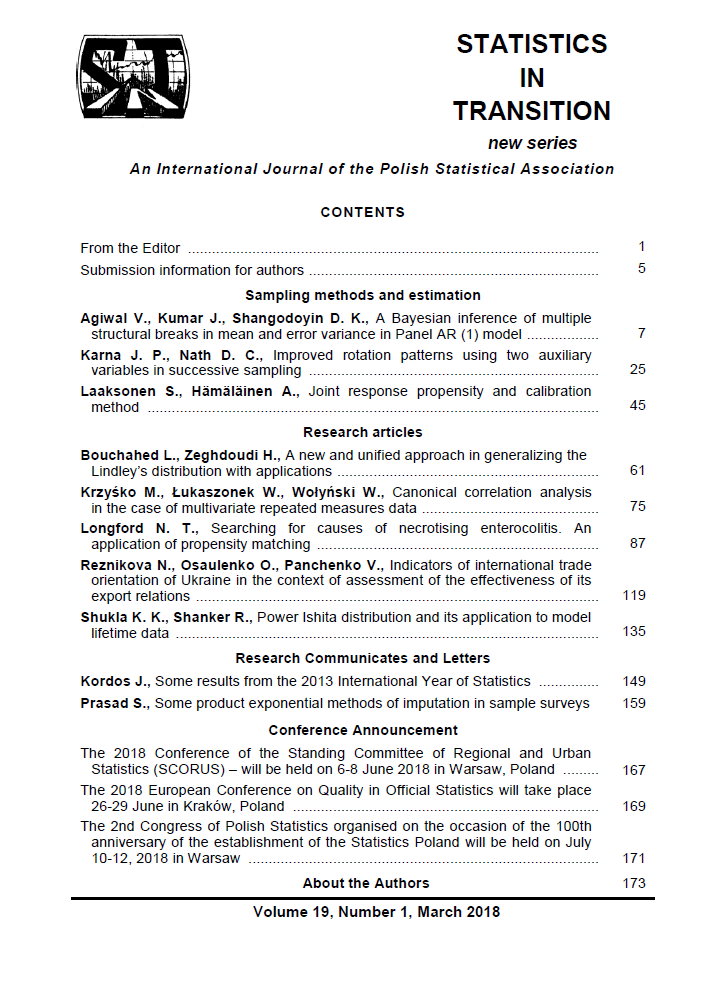ARTICLE
ABSTRACT
The approach to study the significance of trade relations between countries by analysing economic vulnerability, economic sensitivity, symmetry and asymmetry of the established economic links is proposed in the paper. This approach is adapted to an analysis of the trade dependence of Ukraine. The estimated interdependence ratios for Ukraine and its largest trade partners – the EU, the Russian Federation, post-Soviet countries, China, the USA and Brazil and India as emerging economies – are compared with the respective ratios of Ukraine’s dependence on these countries’ markets. The analysed dynamics of Ukraine’s GDP dependence on Ukraine’s trade partners shows a growing relative weight of the countries that have not had a substantial role in the foreign trade of Ukraine. The proposed approach for estimating the quality of the established trade relations is supposed to contribute to the radical transformation of Ukraine’s foreign trade.
KEYWORDS
economic policy, export orientation, trade relations, trade dependence
REFERENCES
BEN-DAVID, D., (1993). Equalizing exchange: trade liberalization and income convergence, Quarterly Journal of Economics, Vol. 108, No. 3, pp. 653–679.
COOPER, R., KENEN, P. B., JONES, R. W., (1985). Economic Interdependence and Coordination of Economic Policies,http://econpapers.repec.org/bookchap/eeeintchp/2-23.htm.
DOLLAR, D., (1992). Outward-oriented developing economies really do grow more rapidly: evidence from 95 LDCs, 1976-85, Economic Development and Cultural Change, pp. 523–544.
EDWARDS, S., (1993). Openness, trade liberalization, and growth in developing countries, Journal of Economic Literature, Vol. 31, No 3, pp. 1358–1393.
EDWARDS, S., (1998). Openness, productivity and growth: what do we really know? Economic Journal, Vol. 108, pp. 383–398.
HARRISON, A., (1991). Openness and growth: a time-series, cross-country analysis for developing countries, NBER Working Paper, No. WPS 809, pp. 6–45.
HATEMI, J. A., IRANDOUST, M., (2001). Productivity performance and export performance: a time series perspective, Eastern Economic Journal, Vol. 27, No. 2, pp. 149–164
INTERNATIONAL MONETARY FUND, (1997). Annual report of the Executive Board for the financial year,http://www.imf.org/external/pubs/ft/ar/97/pdf/file06.pdf.
KINDLEBERGER, C. P., (1962). Foreign trade and the national economy, New Heaven; Yale University Press.
KRUEGER, A. O., (1988). Why trade liberalization is good for growth, The Economic Journal, Vol. 88, pp.1513–1522.
KUNST, R.M., MARIN, D., (1989). On exports and productivity: a causal analysis, Review of Economics and Statistics, Vol. 71, No. 4, pp. 699–703.
ROMER, P., (1986). Increasing returns and long–run growth, Journal of Political Economy, Vol. 94, pp. 1002–1038.
SACHS, J., WARNER, A., (1995). Economic reform and the process of global integration, Brookings Papers on Economic Activity, Vol. 1, pp. 1–118.
STIGLITZ, J. E., (1998). Towards a new paradigm for development: strategies, policies, and processes,http://citeseerx.ist.psu.edu/viewdoc/download?doi=10.1.1.199.9708&rep=rep1&type=pdf.
WACZIARG, R., (2001). Measuring the dynamic gains from trade, World Bank Economic Review, Vol. 15, No. 3, pp. 393–429.
